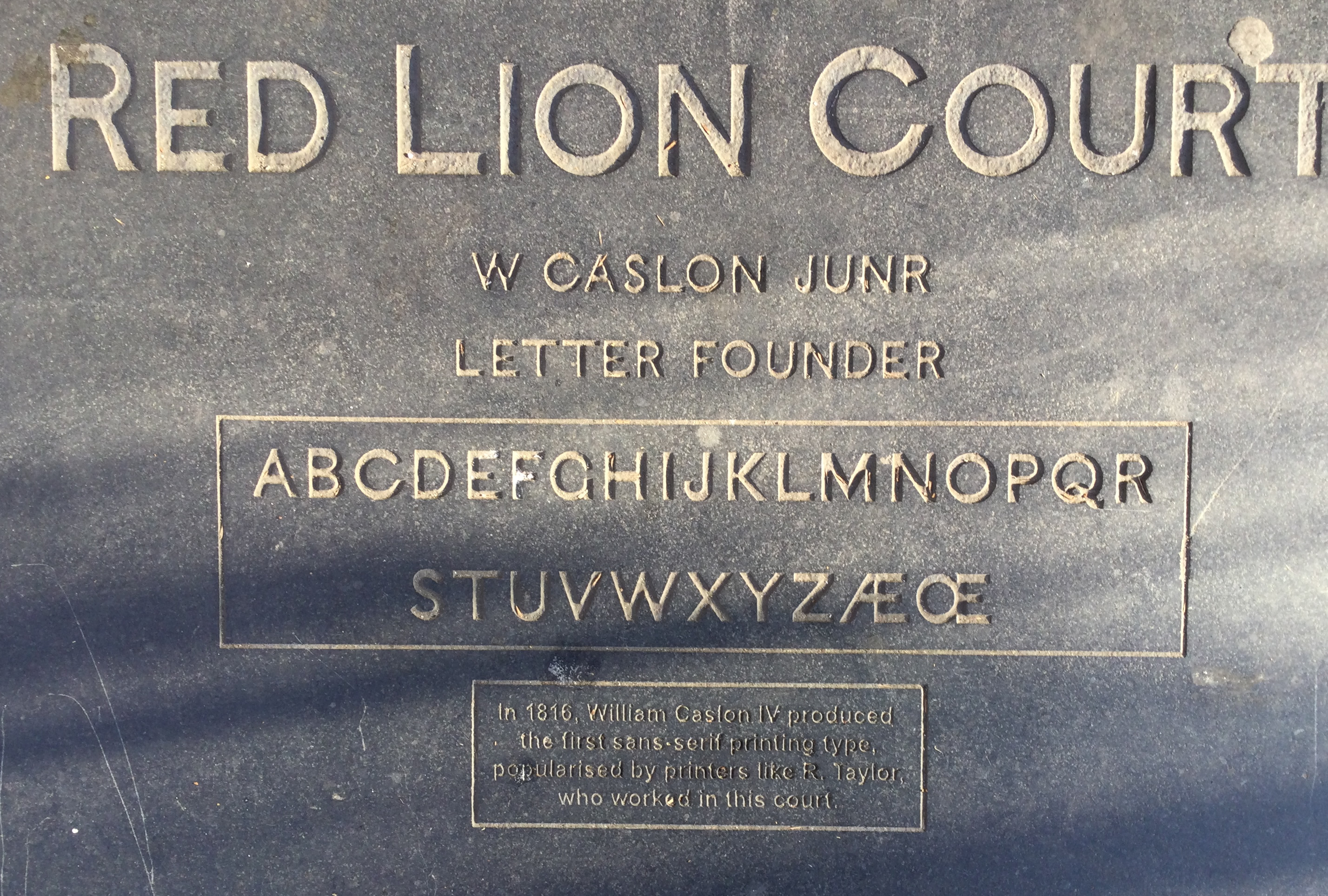
Typefounding and the Caslon family
In the early days of printing, printers used type, individual letters stored in separate compartments, which would be picked out in order one-by-one, and placed in a composing stick. When several lines were complete, they would be transferred to a forme. When the page was complete, the forme would be locked up, so that the letters were held rigidly in place. The forme was then moved to the bed of the printing press, where the type would be inked, the paper moved on top of it, and pressure applied to transfer the ink from the head of the type onto the paper. The making of these individual letters was done by typefounders. There were many typefounders in London, but one family, the Caslons, are the most well known. William Caslon the Elder starte
 d
making type around 1730.His development from existing styles of simple fonts,
which wervery suitable for large areas of text, as in books, became very
popular; for example, the first printed copy of the US Declaration of Independence
was set in a Caslon type.
d
making type around 1730.His development from existing styles of simple fonts,
which wervery suitable for large areas of text, as in books, became very
popular; for example, the first printed copy of the US Declaration of Independence
was set in a Caslon type.
The picture shows the sample fonts and sizes of type available from William Caslon the Elder in 1734

Three more generations of Caslons followed; William Caslon IV is known for having made the first san-serif type. This is commemoratged on a plaque set into the pavement at the entrance to Red Lion Court.
